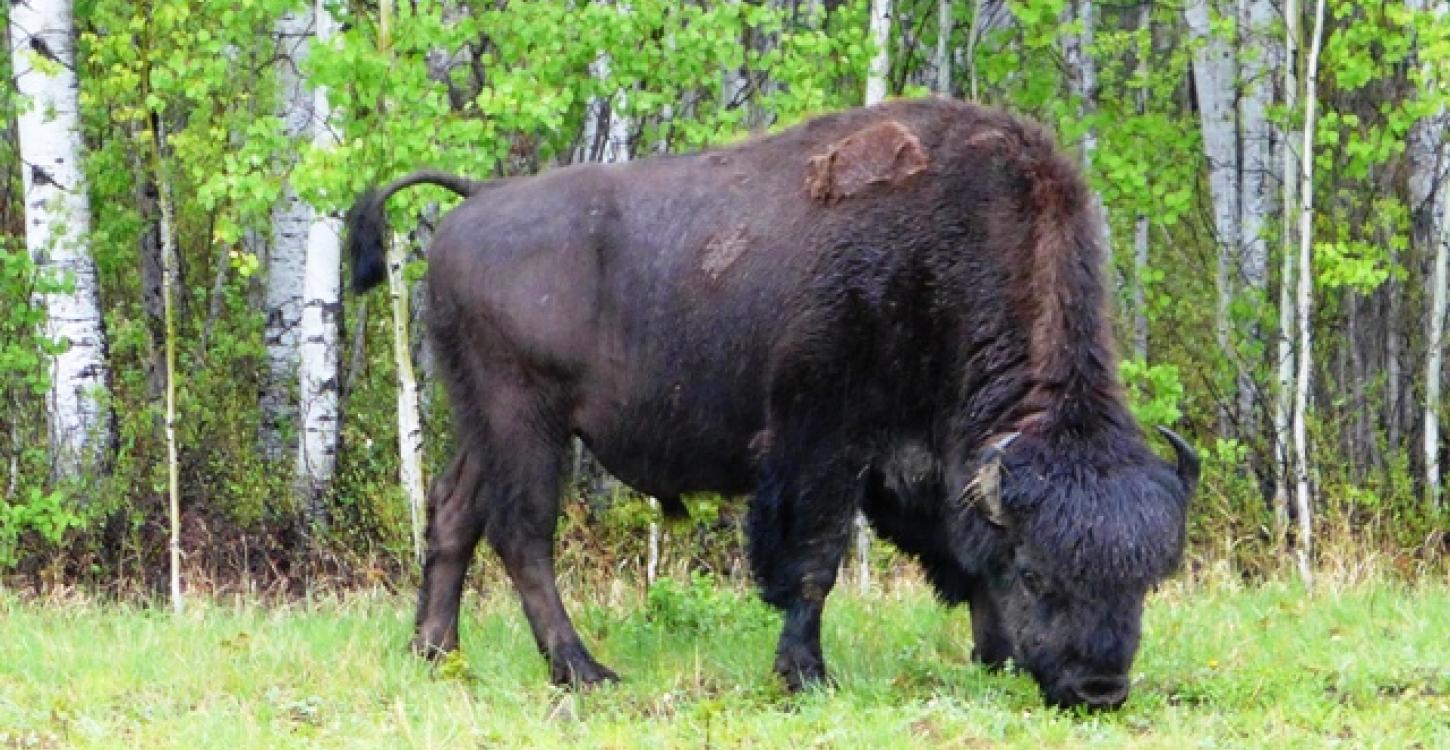
Mackenzie Wood Bison Photo: Susan Beaumont, WRRB
Mackenzie Wood Bison Update
September 30, 2016
In Canada, bison are a species at risk under the federal Species at Risk Act. In April 2016, the NWT Species at Risk Committee assessed wood bison in the NWT as Threatened.
There are three wood bison herds in the NWT: the Mackenzie population found in Wek’èezhìı, the Greater Wood Buffalo Ecosystem population and the Nahanni population. Altogether, there are only about 2,500 wood bison in the NWT, and over the last seven years, their numbers overall have declined by approximately 50%. These bison are now being considered for listing as a Threatened species in the territory under the Species at Risk (NWT) Act—the first time the risk of extinction of a wildlife population from the NWT has been assessed given the numbers, population trends and threats.
Their small population size makes NWT wood bison vulnerable to threats, such as diseases including anthrax, introduced bovine tuberculosis and brucellosis. A severe anthrax outbreak in the Mackenzie population in 2012 was one of the key “drivers” of the decline, but not the only cause. There are other threats related to the loss of important meadow habitat, human-caused mortality, such as vehicle collisions, and increased predation.
Community Consultations
The Conference of Management Authorities is preparing to make a decision on whether to add wood bison to the NWT List of Species at Risk. To gather input from the public on the listing, the WRRB and Tłı̨chǫ Government will be consulting with community members in Behchokǫ̀ and Whatì in October 2016. Those communities lie within the range of Mackenzie wood bison in Wek’èezhìı.
 Range of Mackenzie Wood Bison in Wek’èezhìı (Map: WRRB)
Range of Mackenzie Wood Bison in Wek’èezhìı (Map: WRRB)
Mackenzie Wood Bison Population—Continued Harvest Closure
Harvest of Mackenzie wood bison has been closed since October 2012 following an outbreak of anthrax that summer which resulted in a loss of over 450 bison. Population surveys since 2012 have shown a decline in herd size from an estimated 1500 animals in 2012 to 851 based on the most recent survey conducted this spring in March 2016.
This is well below the 1000 animals that the draft National Recovery Strategy has set as the minimum size for a wood bison population to be considered recovered. The draft Mackenzie Bison Management Plan for the NWT has also proposed no harvesting when the population is below 1000.
At its August meeting, the WRRB supported the continuation of the harvest closure until an updated population estimate is available in March 2019.
Fact Box:
- A Threatened species or wildlife population in the NWT is likely to become endangered in the NWT if nothing is done to reverse the factors leading to its extirpation (disappearance from an area) or extinction (no longer exists anywhere).
- A recovery strategy is a planning document that identifies what needs to be done to “recover” a species by stopping or reversing its decline.
- The WRRB is a member of the Mackenzie Wood Bison Working Group which was formed to draft a management plan for the Mackenzie bison population.
- Wood bison are the largest land mammals in North America.
- Wood bison are an important part of the boreal forest ecosystem. They use different habitats depending on the season, moving from willow pastures in summer where they feed on grasses, sedges and willows, into the forest in fall to feed on lichens. In winter, they move to frozen wet sedge meadows and lake shores where they feed on sedges.